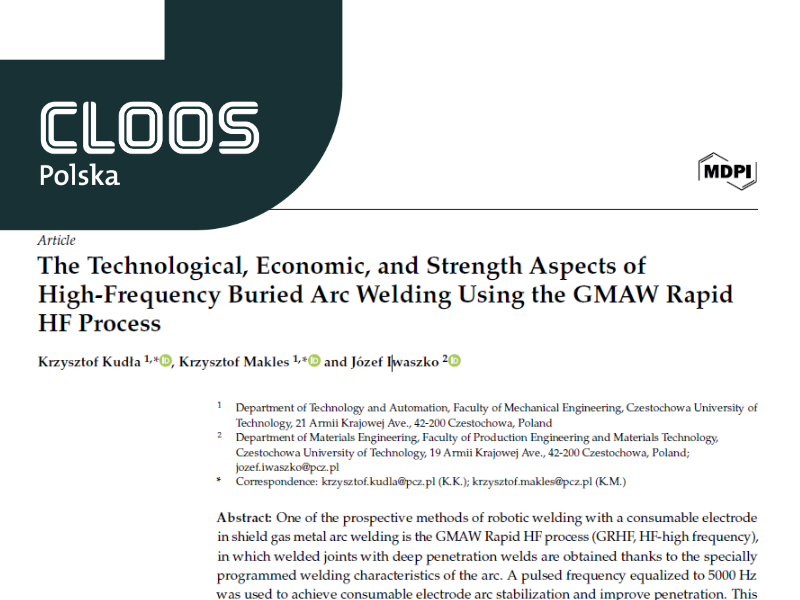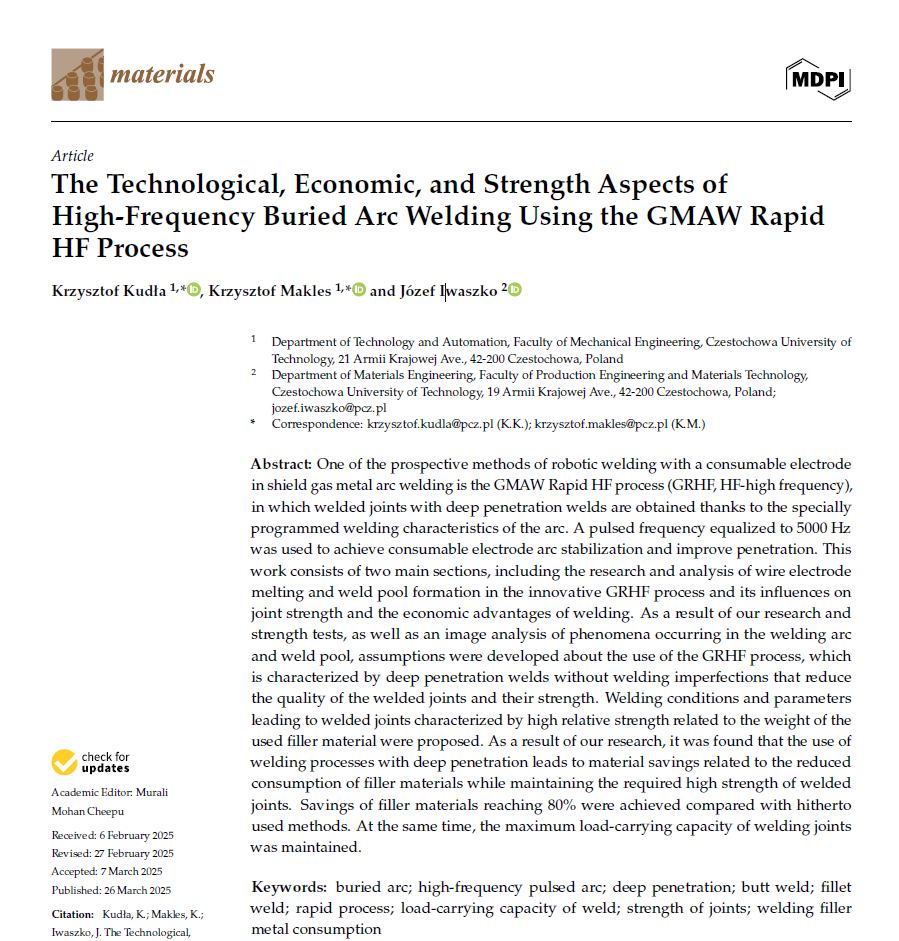The Technological, Economic, and Strength Aspects of High-Frequency Buried Arc Welding Using the GMAWRapid HF Process
 *Artykuł opublikowany w czasopiśmie Materials
*Artykuł opublikowany w czasopiśmie MaterialsAuthors: Krzysztof Kudła 1 , Krzysztof Makles 1, and Józef Iwaszko 2
1. Department of Technology and Automation, Faculty of Mechanical Engineering, Czestochowa University of Technology, 21 Armii Krajowej Ave., 42-200 Czestochowa, Poland
2. Department of Materials Engineering, Faculty of Production Engineering and Materials Technology, Czestochowa University of Technology, 19 Armii Krajowej Ave., 42-200 Czestochowa, Poland;
Abstract: One of the prospective methods of robotic welding with a consumable electrode in shield gas metal arc welding is the GMAWRapid HF process (GRHF, HF-high frequency), in which welded joints with deep penetration welds are obtained thanks to the specially programmed welding characteristics of the arc. A pulsed frequency equalized to 5000 Hz was used to achieve consumable electrode arc stabilization and improve penetration. This work consists of two main sections, including the research and analysis of wire electrode melting and weld pool formation in the innovative GRHF process and its influences on joint strength and the economic advantages of welding. As a result of our research and strength tests, as well as an image analysis of phenomena occurring in the welding arc and weld pool, assumptions were developed about the use of the GRHF process, which is characterized by deep penetration welds without welding imperfections that reduce the quality of the welded joints and their strength. Welding conditions and parameters leading to welded joints characterized by high relative strength related to the weight of the used filler material were proposed. As a result of our research, it was found that the use of welding processes with deep penetration leads to material savings related to the reduced consumption of filler materials while maintaining the required high strength of welded joints. Savings of filler materials reaching 80% were achieved compared with hitherto used methods. At the same time, the maximum load-carrying capacity of welding joints was maintained.

